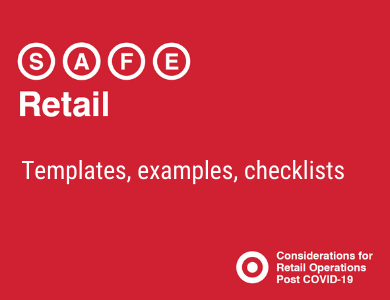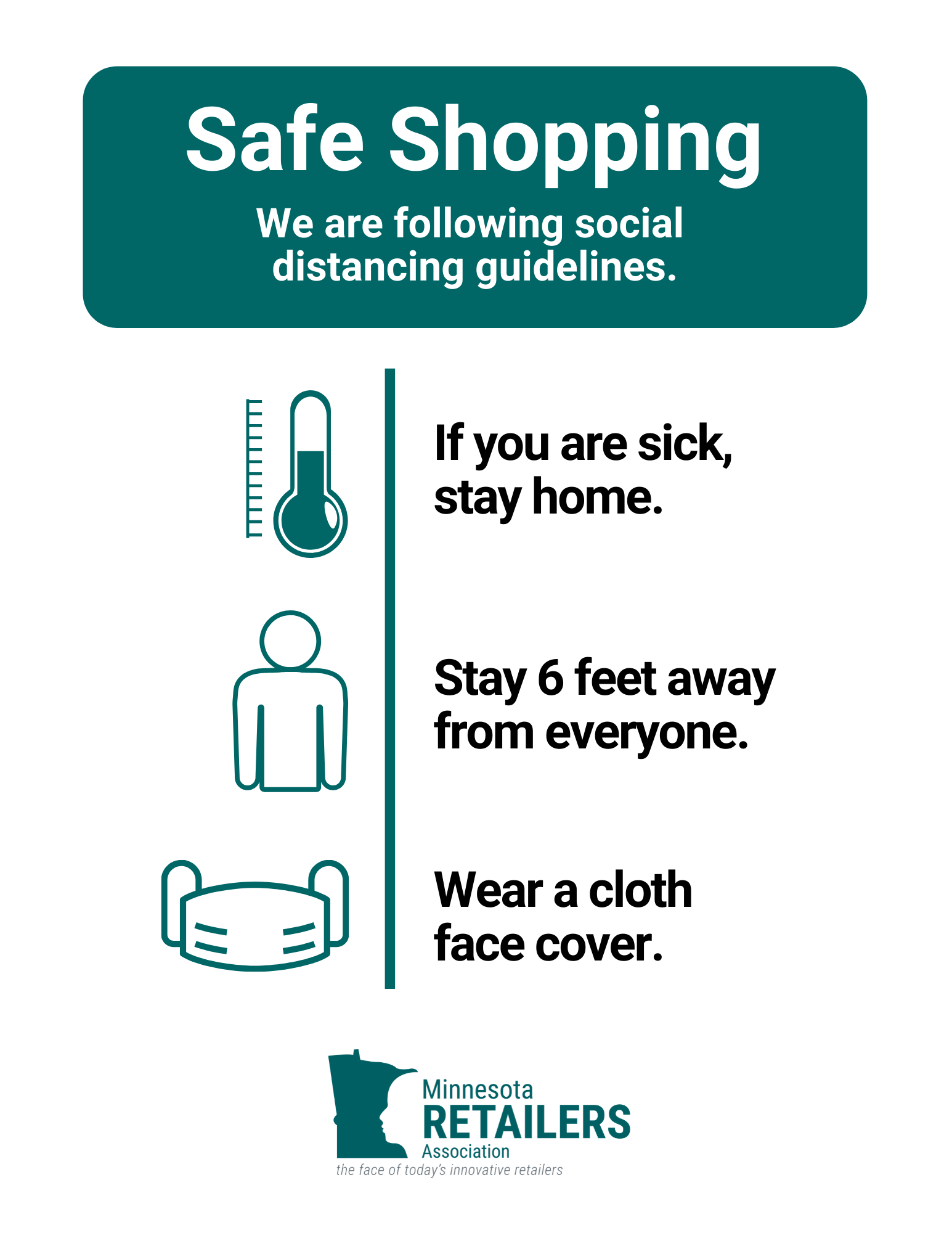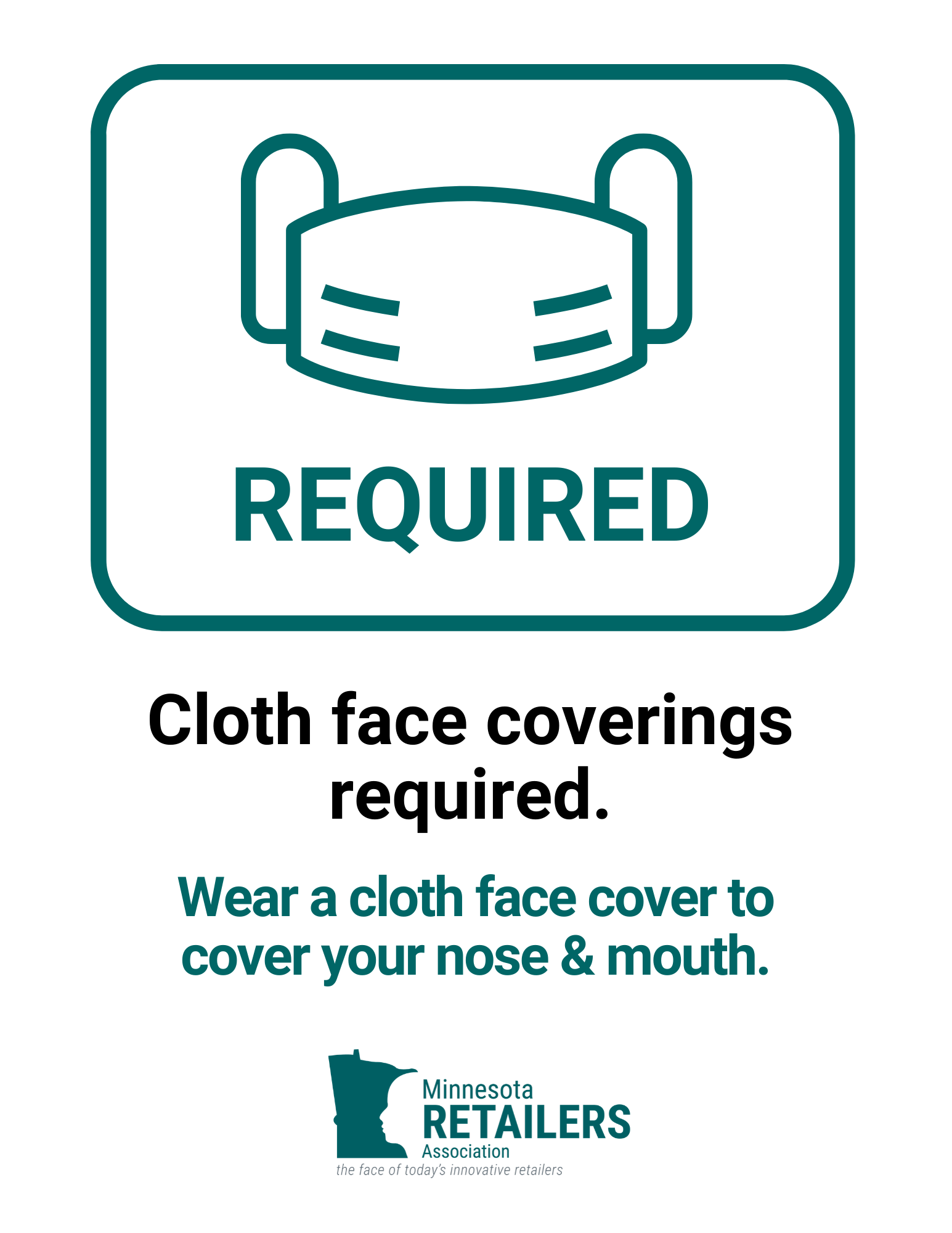Local Chambers Of Commerce and Local Governments Are Saving Mainstreet--Responding To The Pandemic With Relief And Creativity
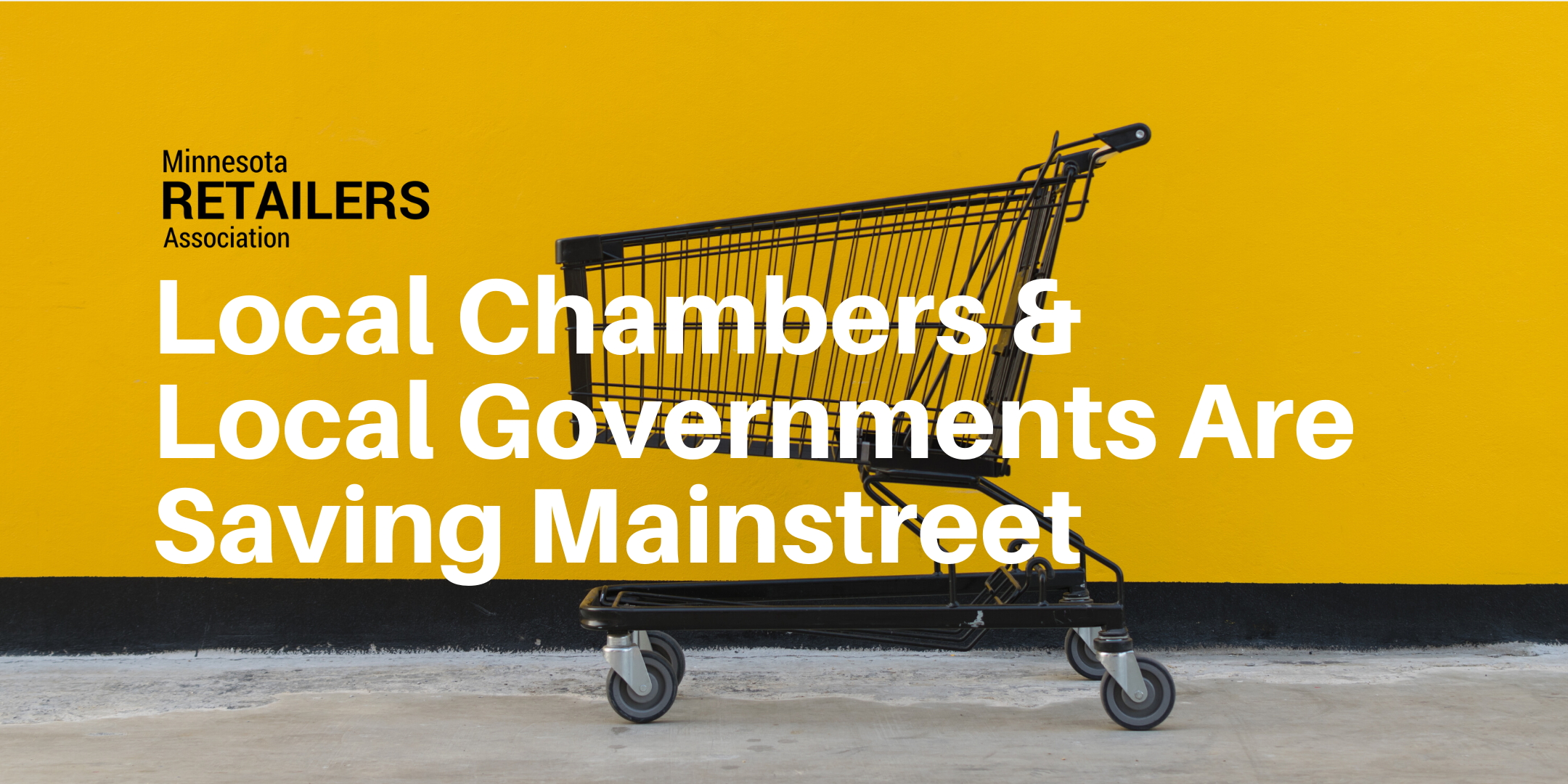
From mandatory closures to reduced customers and increased expenses, COVID-19 has taken a heavy toll on retailers and all of Minnesota's industries. At the Minnesota Retailers Association we have been inspired and impressed with the incredible support local chambers of commerce, local business associations, and their partnering local governments have been providing throughout the pandemic.
"We know today, local chamber executives and their teams are on the pandemic economic front-line, working long hours to keep businesses informed and help them prepare for what's coming next," said Minnesota Retailers Association President Bruce Nustad. "An important part of the impressive local chamber work has been their collaboration with cities and counties. And we have seen local governments step up in big, big ways in partnership with their chamber of commerce through creativity and flexibility. In many ways, through their collaborations over the years, local chambers and local government have trained for this very moment, and retailers, small businesses and the Minnesota Retailers Association are so grateful. These collaborations and resulting actions are leading the efforts to save Minnesota's mainstreets."
While federal and state relief and support initiatives are important, here are a few examples of how local chambers in partnership with local governments are making a significant difference in keeping local economies moving forward:
- Timely and critical relief funding
- Grants to help businesses stay afloat and re-open or prepare to re-open under safety protocols
- Relaxed signage regulations allowing business to better communicate with customers
- Flexibility with sidewalks, allowing the expansion of stores outdoors
- Re-open initiatives that unify the chamber and government around safe re-openings
- Letters of support for local communities highlighting local needs
- Backing of safe shopping zones, welcoming customers back
- Speeding permit processes
- Expansion of outdoor dining
- Sharing of ideas and updates
These efforts and many more represent the vital work being done by chambers of commerce, business associations and local governments. Thank you to each!
Now is a great time to support your local chamber or business association through membership!
Written by Bruce Nustad
on Monday, 25 May 2020.
Posted in Trends, Retail Operations, Policy & Politics

In good news for consumers and retailers, retail stores including stores and malls/shopping centers can re-open to guests on May 18 following Governor Walz issuance of Executive Order 20-56 May 13. The Minnesota Retailers Association worked with DEED Commissioner Steve Grove and a retail roundtable workgroup (representing retailers, chambers of commerce, associations, and other stakeholders) including the Minnesota Retailers Associaiton, the MetroNorth Chamber of Commerce, the Twin Cities North Chamber of Commerce and others on re-open guidelines over the past few weeks. Those guidelines are listed below.
The guidelines below do not constitute legal advice and each retailer should do its very best to put in place a re-open plan tailored to best practices and safety for employees and customers.
These guidelines are not intended to apply to restaurants, bars, salons and other business where separate re-opening plans are being contemplated or businesses that are open under existing Executive Orders. We will post links to guidelines for these business when they are available.
Dates for opening and related guidelines:
MnRA's Suggested Guidelines For Re-Opening A Minnesota Customer Facing Business
1. Requirements To Re-Open
The below items are requirements to re-open:
-
Create And Execute A Safety Plan. Retailers must have a safety plan available to workers, customers, the public and government officials with option to modify the existing COVID-19 Preparedness Plan template available at www.dli.mn.gov/updates. THIS IS REQUIRED UNDER EXECUTIVE ORDER 20-56 & SUBSEQUENT ORDERS.
-
Include Best Practices Modified To The Retail Setting. A safety plan should contemplate but need not be limited to tailored, site-specific best practices surrounding health/wellness, social distancing, cleaning/sanitation/protection, and operations/communications for in-store customers, appointments, curbside pickup and delivery. See the best practices outline and resources below for suggestions. ADDRESSING BEST PRACTICES IS REQUIRED UNDER EXECUTIVE ORDER 20-56 & SUBSEQUENT EXECUTIVE ORDERS.
Also, note the "Employer plan requirements checklist" from the Department of Labor and Industry. See this list for plan requirements which includes items for malls and shopping centers.
-
Modify Occupancy To Accommodate Social Distancing. Retailers must adjust allowable occupancy and consider regulating customer flow to accommodate social distancing and safety. A 50% OCCUPANCY (MAXIMUM) STANDARD IS REQUIRED UNDER EXECUTIVE ORDER 20-56 AND SUBSEQUENT EXECUTIVE ORDERS.
2. Best Practices Outline
The below items should be considered in the safety plan and included, excluded, or modified to improve safety for employees and customers. The safety plan should be specific to the store.
Health and wellness:
-
-
Evaluate employee health according to CDC and MDH guidelines and screen employees so that only well employees are at work.
-
Adjust policies to accommodate employees not working due to illness or COVID-19 symptoms.
-
Ask that only healthy customers feeling well shop in the store.
Social distancing:
-
-
Evaluate space, change configuration, adjust flow and modify occupancy with guidepost of 50 percent of occupancy rating or other occupancy metric with deference to ensuring social distancing per CDC guidelines and recommendations.
-
Control building access and regulate customer movement with consideration of one-way traffic.
-
Use signage at the door and throughout the store as well as public address system messages if available to remind customers of social distancing.
-
At checkout and areas of high congestion mark out social distancing, including floor markers for distance, line lanes, and marking adjacent areas where customers may be waiting for store access.
-
At checkout extend space between the customer and clerk with markings, physical barrier, or plexiglass divider.
-
Reconfigure space used for fittings to provide social distancing between customers and protections for customers and employees.
-
Encourage customer use of curbside, delivery, and appointment options.
Cleaning, sanitation & protection:
-
-
Execute an enhanced, thorough overall store cleaning schedule.
-
Clean and disinfect high touch surfaces frequently.
-
Make hand sanitizer available to customers and employees.
-
Follow Minnesota Department of Heath guidance and relevant Executive Orders on face covering use by employees and customers unless a stronger store policy is articulated.
-
Add protective shields at checkout where social distancing is not practical.
-
Clean fitting rooms, especially high touch areas, following each customer use.
-
Modify merchandise return policies to accommodate cleaning and/or delay of product return to shelves.
-
Make gloves available to workers and articulate when gloves should be used.
Operations & communications:
-
-
Clearly communicate safety actions and procedures to employees and consumers (website, signage, e-mail).
-
Train all employees on procedures and service surrounding safety protocols and practices, including customer service reminders on social distancing.
-
Make interactions between customers and employees as contactless as practical, including fittings, signatures, transactions, and payments.
-
Have employees make a special effort to engage customers to help them find products efficiently and remind them to practice social distancing.
-
Ask a customer’s permission to touch their products, allow a customer to position their own products for checkout, and encourage self-service bagging.
-
Consider special shopping hours for high-risk individuals and modified hours of operation to accommodate cleaning.
-
Modify and communicate changes to your policies including return merchandise and reusable bags.
-
Discontinue group customer events and sampling.
-
Review safety procedures and expectations with vendors.
-
Thank customers and workers for their focus on safety.
3. Best Practices Resources
The following resources are available as customer facing businesses craft their plans for re-opening. If you have a best practice document or resource to share, please e-mail us at
This email address is being protected from spambots. You need JavaScript enabled to view it.. As always, check
www.mnretail.org/covid-19 for the latest news impacting retailers.
Download & Print Signs
Based on requests from retailers, MnRA offers these signs for download and print. Note: Face coverings are strongly recommended by the Governor and each retailer is allowed to make its own decision on whether they are required or requested. As such we are providing two sign options below.
Also, check out the Target S.A.F.E. Retail document for many printable signs and policies.
Just Added: Watch Our Re-Opening Guidance Webinar Now
Written by Bruce Nustad
on Wednesday, 13 May 2020.
Posted in MnRA News, Retail Operations
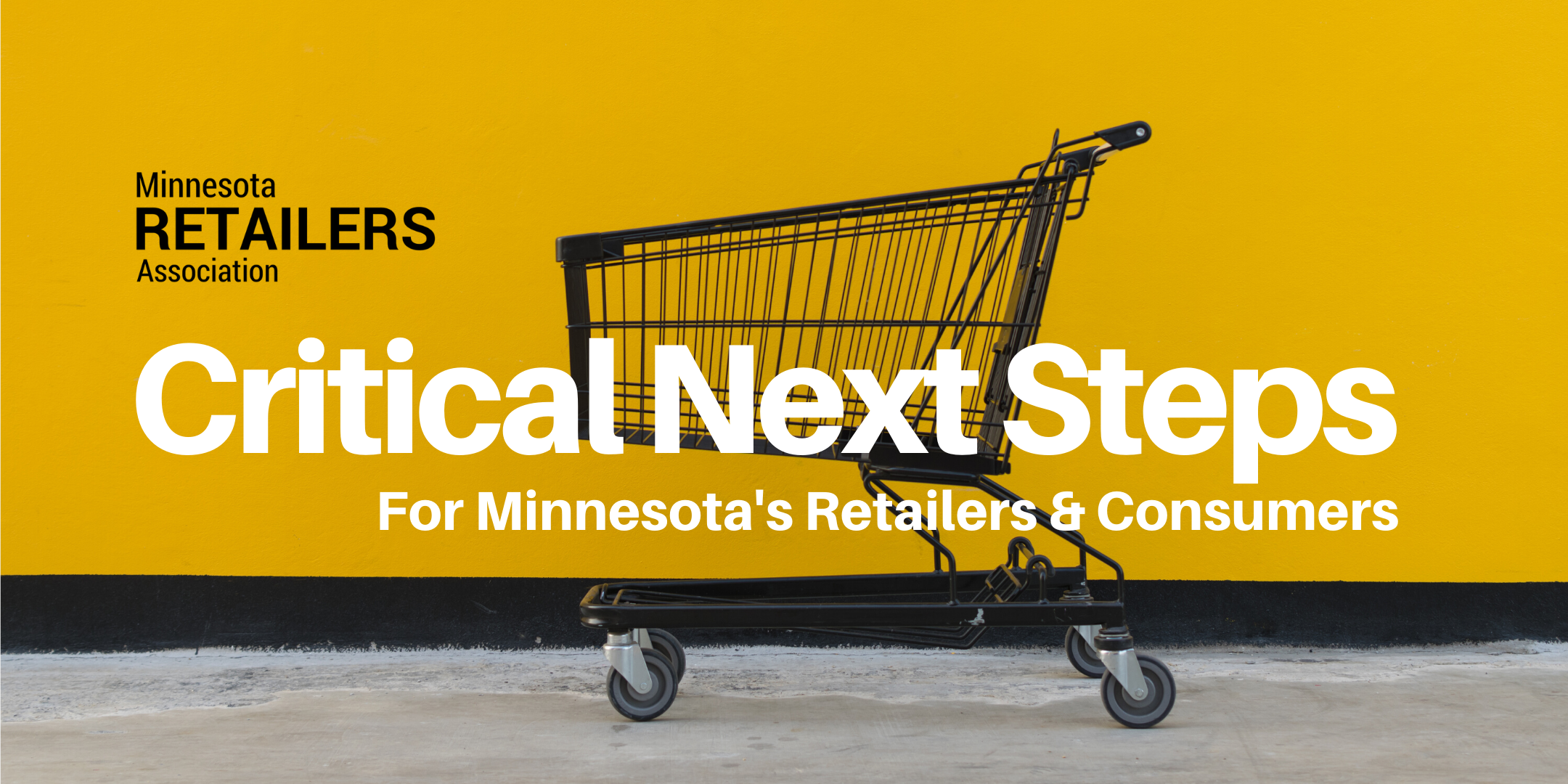
The Minnesota Retailers Association is ready to work with the Governor and local, state, and federal elected officials on important next steps. Our success in defeating COVID-19 and restoring Minnesota’s economy depends on balancing public health & economic health.
Our plan includes:
Phase I - IMMEDIATE
- Make all organizations impacted by COVID-19 eligible for the State DEED Emergency Loan Program. Immediate eligibility should be extended to all impacted businesses as thousands more organizations have been impacted by the pandemic. Access to this bridge loan is critical while awaiting federal relief. State action required. DONE!
- Delay May 15 business property tax payments 60 days and assist impacted local governments. Delaying the property tax payment for retailers and businesses broadly impacted by COVID-19 will result in immediate relief for property owners, create more flexibility for renters, and reduce reliance on loans. State or county action required DONE! Nearly half of MN counties enacted reflief or delayed payments.
- Extend and increase funds for the Federal Paycheck Protection Program to allow more access to this critical relief fund during any sustained economic slowdown. Federal action required. DONE!
Phase 2 - SHORT TERM – when supported by public health decisions
- Open up curbside shopping and delivery so main street retailers in every Minnesota community can generate some cash flow similar to restaurants and essential businesses today. This allows businesses to meet the needs of their customers, appropriately protect and care for their customers and workers, and begin important best practice safety preparations in anticipation of reopening. State action required. DONE, opened May 4.
- Take action to expand widespread COVID-19 antibody testing and tracing critical to getting Minnesotans back to work. Testing for emergency workers and including retail workers in grocery, pharmacy and other high public contact positions should be prioritized. State action required. DONE!.
Phase 3 - MID-TERM – when supported by public health decisions
- Let stores reopen to consumers under social distancing store best practices including steps to protect workers and customers similar to what essential businesses are doing today. Best practices include social distancing reminders and markings as well as controlling store flow and occupancy. State action required. DONE, open May 18!
LONG TERM
- Return customers’ access to businesses under a new normal with post-pandemic shifts in operations based on lessons learned. State action required. Undone.
>> Click here for a PDF version of this plan.
Written by Bruce Nustad
on Thursday, 16 April 2020.
Posted in Retail Operations, Policy & Politics


